Juniper Chinese: description, varieties, planting and care
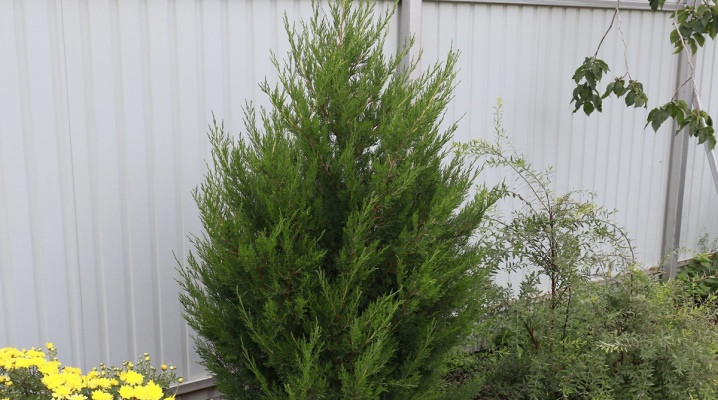
Coniferous crops are in particular demand among designers and decorators of gardens and parks, as well as ordinary gardeners due to their external decorative effect, as well as the possibility of air disinfection. These plants include Chinese juniper, presented in a wide variety.
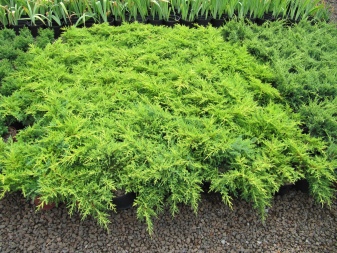
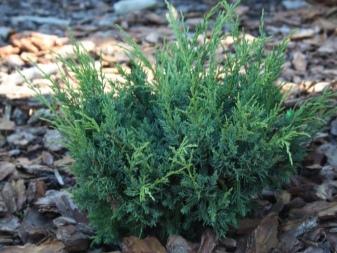
Description
Taking into account written sources, it was found that the first plantations of Chinese juniper, rooted by human hands, date back to the 18th century. And to this day, this culture in all its varieties enjoys well-deserved popularity among landscape designers and amateur gardeners. The homeland of culture is the Far East, as well as China, from where the name of the plant originated.
The evergreen conifer is in demand due to its unusual needles, which develops in a bulging state in adult crops, although young plants have a slightly different structure of scales - tightly adjacent to the base of the shoot.
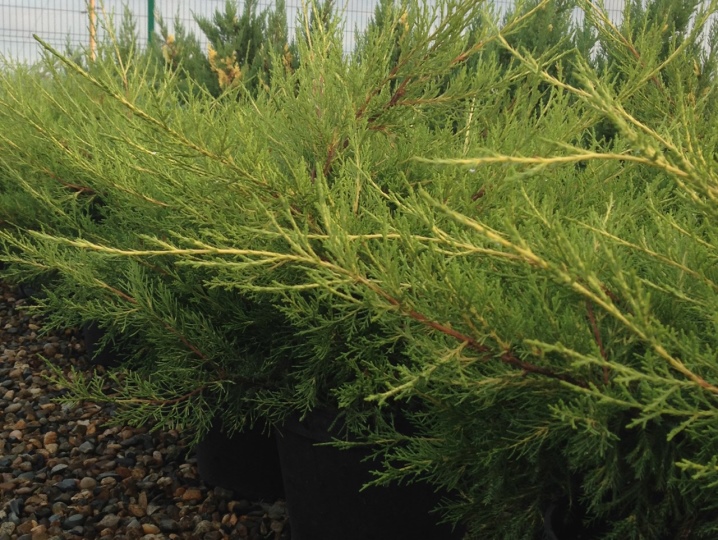
In the Chinese juniper, the needles initially have a length of no more than 3 mm, but as the culture itself grows, its length increases by 4 times. Elongating, the needles gradually separate from the wood, its structure becomes rigid, while a white stripe is clearly visible in the color. Juniper grows slowly, fruiting is infrequent. The cones of the ephedra are dark blue cones with several seeds inside. Seed material can be round or elongated, its size depends on many factors. The appearance of cones with seeds in all varieties of Chinese juniper can be expected no earlier than a year after planting.
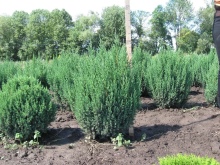
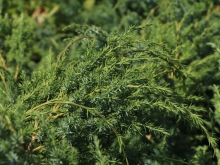
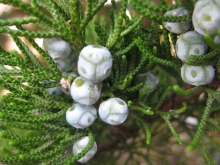
Depending on the species and variety in the open field, you can find crops of impressive size in width and height, which can reach 20 meters and have a pyramidal crown. And also among the representatives of this evergreen culture there are creeping shrubs with thin shoots, the diameter of which will not exceed 2.5 mm, and the height of an adult plant will be no more than 50 centimeters.

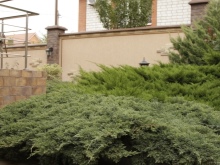

Juniper can be successfully grown not only in suburban areas, but also within the city, the culture in all its varieties perfectly tolerates urban conditions with excessive air pollution, in addition, it acts as a natural purifier. And also, if necessary, it will be possible to root the ephedra in the steppe area, in areas with a harsh climate. The minimum life span of one plant will be at least 100 years., however, this indicator will largely depend on agricultural technology, especially in the first season after rooting.
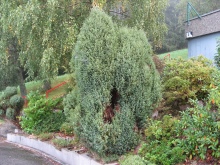
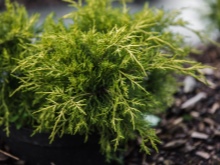
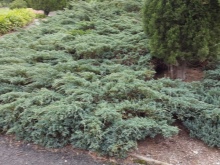
Varietal variety
Due to the popularity of the culture, breeders have bred about 50 varieties of juniper, which will vary in the shape of their crown, size and color of needles. Among the most popular varieties of this species, several names are worth mentioning.
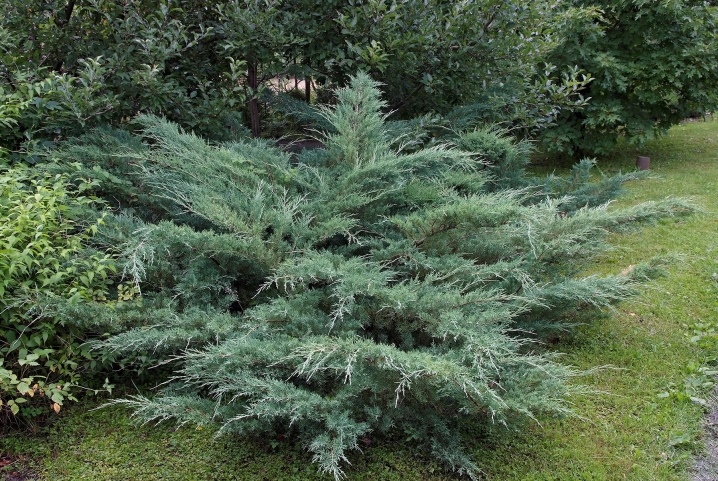
"Expansa variegat"
A creeping culture with a bluish color of needles with a milky white blotch. This color scheme gives the coniferous composition an incredibly attractive appearance in the garden or parks. This variety is considered the smallest among the whole variety of junipers, since the height of an adult plant does not exceed half a meter mark. Juniper develops mainly in a horizontal direction, the squat part of the culture can reach 1 meter.
The plant is remarkable for its frost resistance, which greatly expands the range of its use in landscape design.
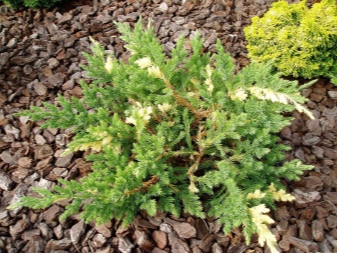
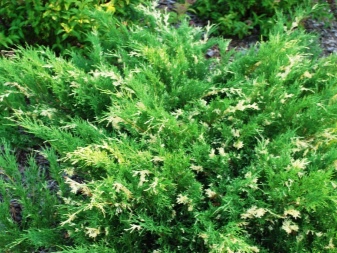
"Strickta"
A group of evergreen crops, represented by conifers with a conical crown. Plants adapt well to any climatic conditions. Some juniper compositions are not grown outdoors, but in containers. The tree is developing at a slow pace, in light of which such plantings will have a maximum height in adult form of about 2.5 meters. The needles of the culture are colored green-gray.
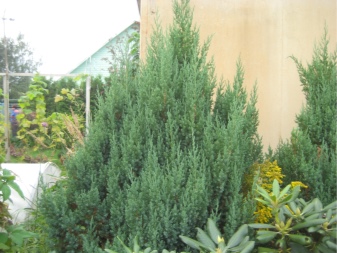
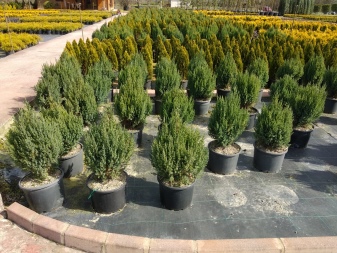
"Blue Alps"
A popular variety of Chinese juniper, notable for its spreading crown and hard needles, the length of which can reach 1 meter. Shoots develop in a drooping state, have a light color. An adult juniper reaches a maximum height of 4 meters. In regions with a harsh climate and winters with little snow, it is recommended to additionally cover this variety. As for the question of where to plant an evergreen, this can be done even in places where shade will be present for the most part of the day.

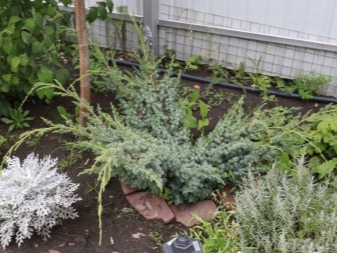
"Spartan"
A hybrid variety of American origin, which stands out among the entire range of evergreens for its resistance to negative temperatures. This feature determines the demand for the Spartan variety in terms of urban greening. The crown lends itself to forming, due to the slow growth, plant care will be minimal.
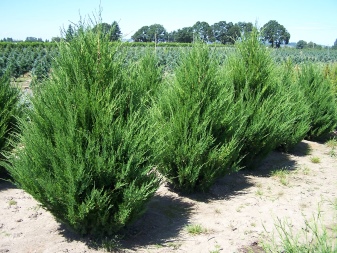
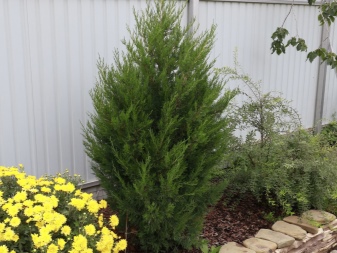
"Mint julep"
The branches of this plant develop in an arched state, the needles are colored in light green shades, and have a scaly shape. The crown can develop up to 3-4 meters in diameter, while the length of the plant increases to no more than two meters.
The fruit of the cone has an attractive purple color with a bluish bloom on the surface.
The hybrid culture is distinguished by its ability to quickly adapt to different conditions and external factors, however, without exception, all parts of the juniper contain poison, this feature was inherited by the culture from the Cossack juniper, which acted as one of the mother plants in selection.
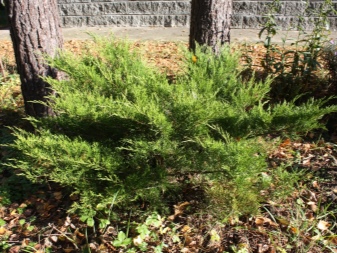
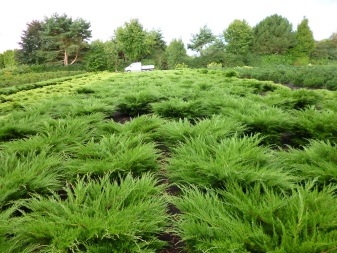
"Kurivao Gold"
The plant stands out for its sprawling arrangement of branches. An adult culture grows from 1 to 3 meters. At the same time, the needles will have several variations of shades on one juniper - the scales turn yellow and green. This mix determines the high decorative qualities of the culture, the juniper looks very colorful and bright. During the season, the culture grows by only 10-15 centimeters, perfectly retains the saturation of its colors even with constant exposure to sunlight. This variety is suitable for planting bonsai-style compositions.
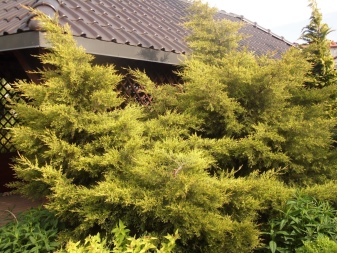
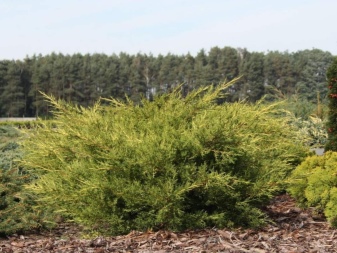
In addition to the above varieties of Chinese juniper, in open ground and in containers they successfully grow:
- Gold Star;
- Blaauw;
- "Monarch";
- "Obelisk";
- "Plumosa aurea";
- "Pfitzeriana".


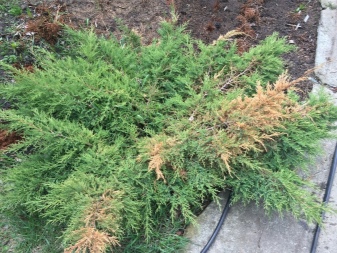

How to plant?
The first priority when planting Chinese juniper in your area will be to choose a suitable rooting site.
This is due to the fact that cultures, whose age exceeds 4 years, experience the process of adaptation in a new place rather painfully, in addition, the ephedra is able to develop in a selected area without transplanting for more than 100 years.
Choosing the most suitable option for rooting, they adhere to the recommendations of specialists.
- It is most correct to root the ephedra from the south, choosing options with partial shade. Almost all juniper varieties will thrive in such a place.
- It is important to determine in advance the level of occurrence of groundwater. The root system will not be able to develop properly in soil, where the liquid will be too close to the surface.
- The soil should be loose to provide good aeration. A suitable option for an evergreen culture would be soil with stones.
- The optimal level of soil acidity will be all indicators within the framework of a neutral or slightly acidic version. In a land with high acidity, juniper will not be able to take root.
- It is best to choose autumn or spring months for planting ephedra. Seedlings with a closed root system can be successfully rooted at any time of the year.
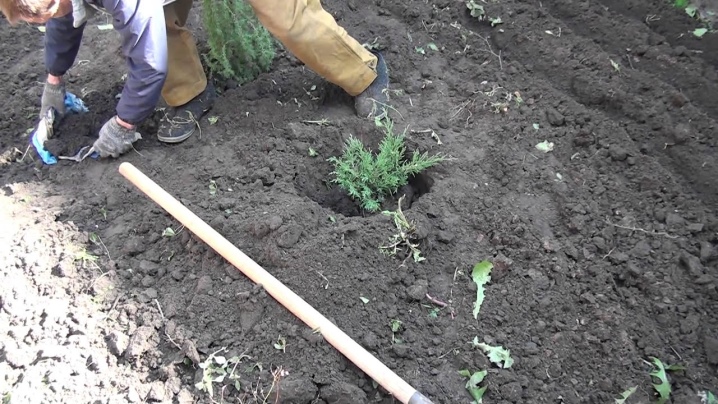
Consider an algorithm for rooting a juniper.
- Young plants can be pre-conditioned in a growth stimulator before planting. This will help the culture to actively build up the underground part.
- To root the ephedra, you must first prepare the planting hole. Its optimal dimensions will be: a depth of at least 70 centimeters, and its width will depend on the age of the culture and its root system. It is more correct to plant several crops next to a minimum distance of 50 centimeters from each other.
- Drainage is recommended at the bottom. Its layer will be about 20 centimeters. A suitable material will be crushed stone, expanded clay, broken brick.
- Next, you need to pour a nutritious soil mixture into the depression. It is best to use soil, the components of which will be peat, sand, turf soil. Before rooting the plant itself, the laid layer should shrink slightly.
- As soon as the earth is rammed, a juniper is planted in the middle of the hole. The root system is straightened, the remaining earth is sprinkled on top, after which the ephedra should be watered, as well as a complex of dressings.

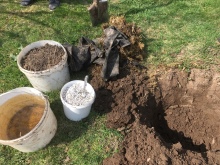
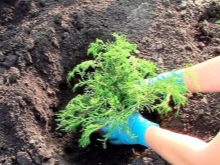
How to take care of it properly?
Chinese juniper care is reduced to perform several mandatory agrotechnical measures.
- Immediately after planting in open ground, as well as throughout the warm season, the crop should be watered abundantly. The optimal frequency of moisturizing will be 1 time per month. If it is hot in summer and the juniper dries up, it is recommended to spray it every evening, moisturizing not only the crown, but also the trunk itself.
- To prevent moisture from evaporating from the soil so quickly, the juniper tree trunk should be overlaid with a layer of organic mulch. This method will also prevent weeds from growing near the plant. The mulch layer should be at least 10 centimeters, usually gardeners use peat for this purpose.
- An evergreen plant lends itself well to molding and pruning, therefore, each gardener, taking into account the characteristics of a particular variety, selects for himself the best option for the appearance of coniferous plantings. It is quite possible to form an attractive hedge from the Chinese juniper. In general, regular pruning has a positive effect on crown density. The first pruning is carried out in March, the subsequent work is recommended to be done at the end of August. No more than a third of the increase from the current year should be removed during haircut.
- Juniper in the middle lane can be grown without additional shelter. However, young seedlings are still recommended to be insulated in the first few seasons, so that the fragile root system can more easily endure the winter. Usually, spruce branches or special covering material are used for these purposes.
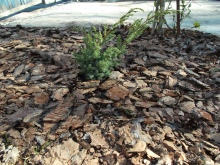
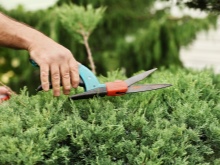
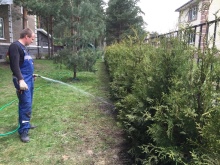
Reproduction methods
There are several ways to get a new culture.
Cuttings
The most popular option, thanks to which you can get a new culture in a fairly limited period of time. It is recommended to collect suitable material in February using young branches that have already become covered with bark. The length of the cuttings can be from 7 to 25 centimeters, however, the presence of two internodes is a prerequisite.
After separation of the material from the mother culture, the cuttings must be treated with a growth stimulator.
Rooting of the material is carried out in a container with a substrate of sand, humus and peat. They deepen into the soil by no more than 2 centimeters. Cuttings are grown in a well-lit room under a film to create a greenhouse effect. Care consists in regularly spraying and watering the cuttings. An open ground transplant can be carried out in 1-2 years.
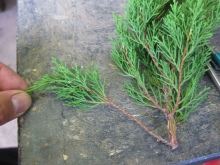
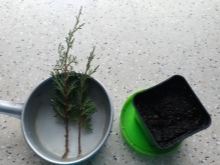

Layers
This option is suitable for varieties of the horizontal type. To get a new culture, it is necessary to use the method of deepening the branches into special grooves, where sand and peat will act as soil. Before sprinkling with soil, the selected shoot must be cleaned in several places from the bark, fixed with a load or wire. Care consists in moderate watering. It will be possible to separate the young juniper no earlier than next season.
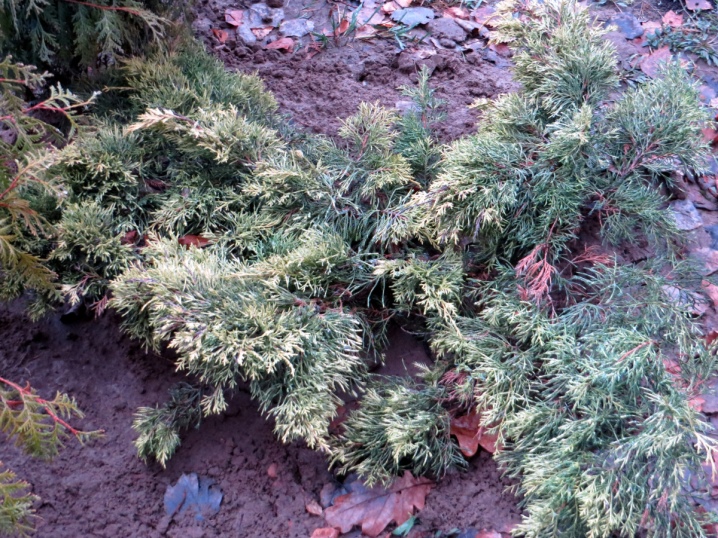
Seeds
The most laborious method, which will help to obtain a large number of new conifers. For planting, seeds from cones with the darkest possible shell are suitable. The collected planting material is kept for some time in water with a growth stimulator, non-viable seeds will be on the surface of the liquid. After checking the seeds, they must undergo a stratification process in vivo. To do this, boxes with soil are put outside in the fall; with the arrival of winter, they should be covered with a layer of snow.
The first shoots will appear from seeds no earlier than 3 years later. Care of young crops will be reduced to similar activities for adult plants.
When the juniper is 3 years old, it can be transplanted into open ground.
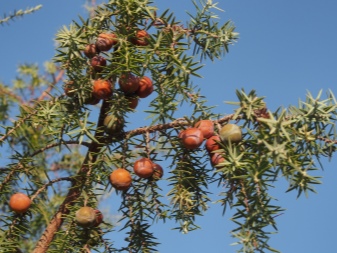
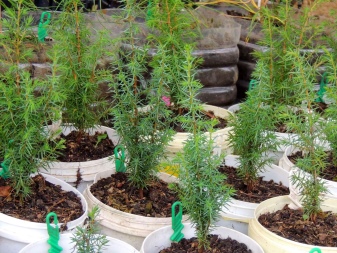
Diseases and pests
Evergreen crops can be affected by various fungi that develop in the soil due to excess moisture. First of all, the root system suffers from such an ailment. Juniper is not subject to treatment, therefore it is recommended to remove it together with the soil in order to avoid further spread of the disease.
And also, evergreen culture can suffer from rust, which manifests itself in the form of brown thickenings on the branches. For treatment, store-bought preparations are used, damaged parts must be cut and destroyed.
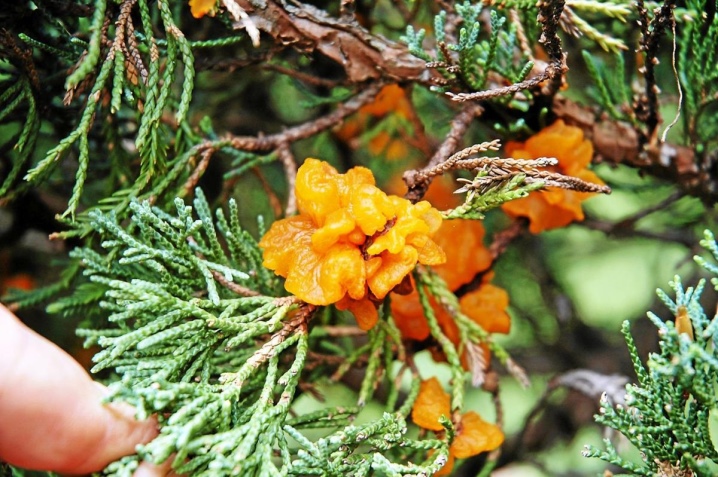
Among the insect pests that pose a danger to the plant, it is worth highlighting the angle-winged moth, scabbard and gall midges. A sign of the presence of pests will be the death of branches and wilting of the culture. The destruction of insects and treatment is carried out with special compositions, and not only plants, but also the soil in which insect larvae may be located, are subject to processing.

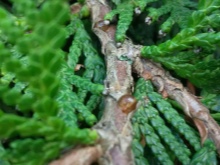
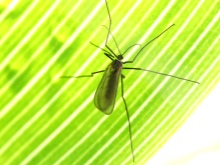
Use in landscape design
From Chinese juniper, you can make a beautiful evergreen hedge in the garden, which will serve as an external fence, as well as garden decoration.
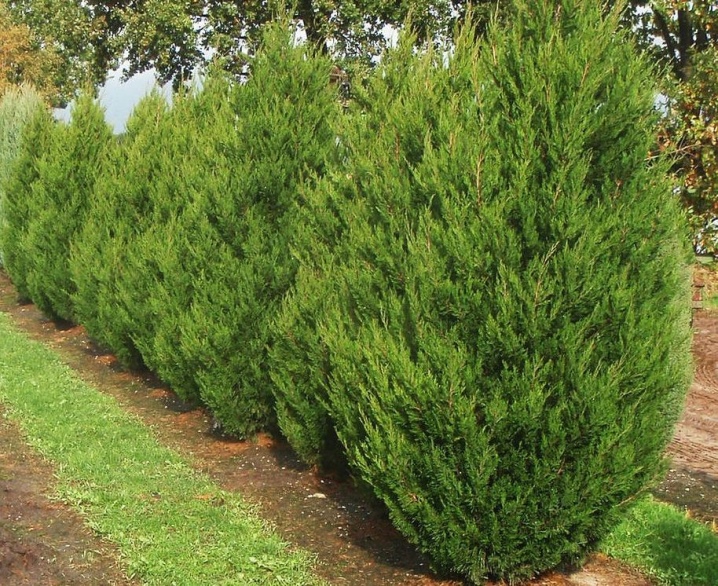
Thanks to the possibility of curly pruning of the crown of evergreen crops in the open field, it will be possible to create unique and attractive compositions.
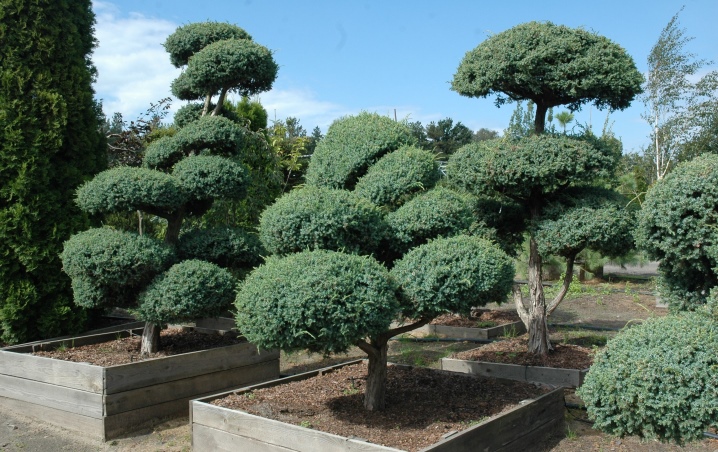
Cultivars with drooping branches will help to complement the landscape design with a beautiful plant that is in perfect harmony with other crops, and also acts as a single crop in a flower bed.
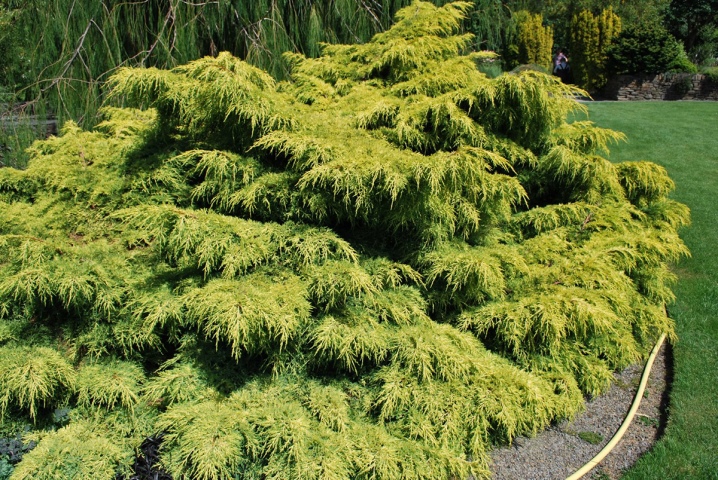
How to care for Chinese juniper, see below.



































































The comment was sent successfully.